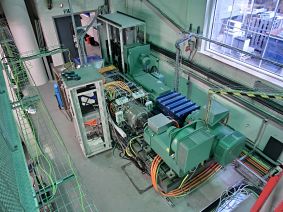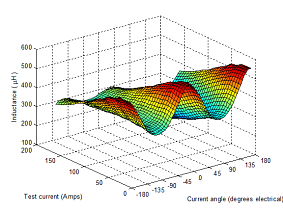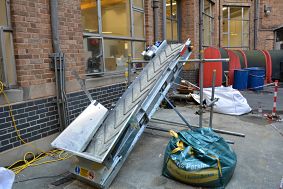Characterising Electromechanical Components & Systems
A range of tests and experiments may be conducted throughout the life of an electromechanical system: In the development phases, measurements may be taken to validate the design analysis; during production, end-of-line tests are used to confirm that manufacturing processes have been correctly followed and, while in service, a product may be continuously or periodically monitored to assess its condition. Testing can be costly and time-consuming, so we are developing techniques to efficiently characterise electromechanical systems and components.
 Indirect Characterisation of Complex PM Machines
Indirect Characterisation of Complex PM Machines
Indirect characterisation, which allow a motor’s efficiency to be deduced from a series of low-overhead tests, are standardised for Induction Machines but equivalent Standards for PM machines have not yet been published. Complex topologies such as multi-segment fault-tolerant aerospace drives offer particular challenges as the loading of each of the segments may be different. We are bringing together our expertise in machine modelling and our extensive experimental capabilities to address this challenge.
Conference paper: https://ieeexplore.ieee.org/document/8002330/
 Novel Techniques for Charactering Chain Drives
Novel Techniques for Charactering Chain Drives
Roller chains are used in a broad range of electromechanical applications from escalators to electric bicycles. The dominant loss mechanism in a roller chain is friction in the pin-bush and bush-roller interfaces. The coefficient of friction can be very accurately measured using a pendulum test. Models can then be used to accurately calculate the efficiency of the complete chain system at a much lower cost than full dynamometer tests.
Paper: http://iopscience.iop.org/article/10.1088/1361-6501/aaa239/pdf
 Static Characterisation Techniques
Static Characterisation Techniques
High performance Interior PM machines for traction applications have complex inductance characteristics. We are using static tests to characterise and understand these machines in a resource efficient way. We work with a number of industrial partners in this area and we have given talks on this subject at IET events.
 Health Monitoring of Industrial Conveyors
Health Monitoring of Industrial Conveyors
This work has involved evaluating the responses of various conveyor belt system parameters such as thermal, acoustic, vibration and electrical power during different operational scenarios. Testing of an industrial conveyor belt system has been conducted in order to characterise the response of parameters as the usage of the system is varied, enabling operators to better observe the state of systems over time and thus update maintenance practices accordingly.
